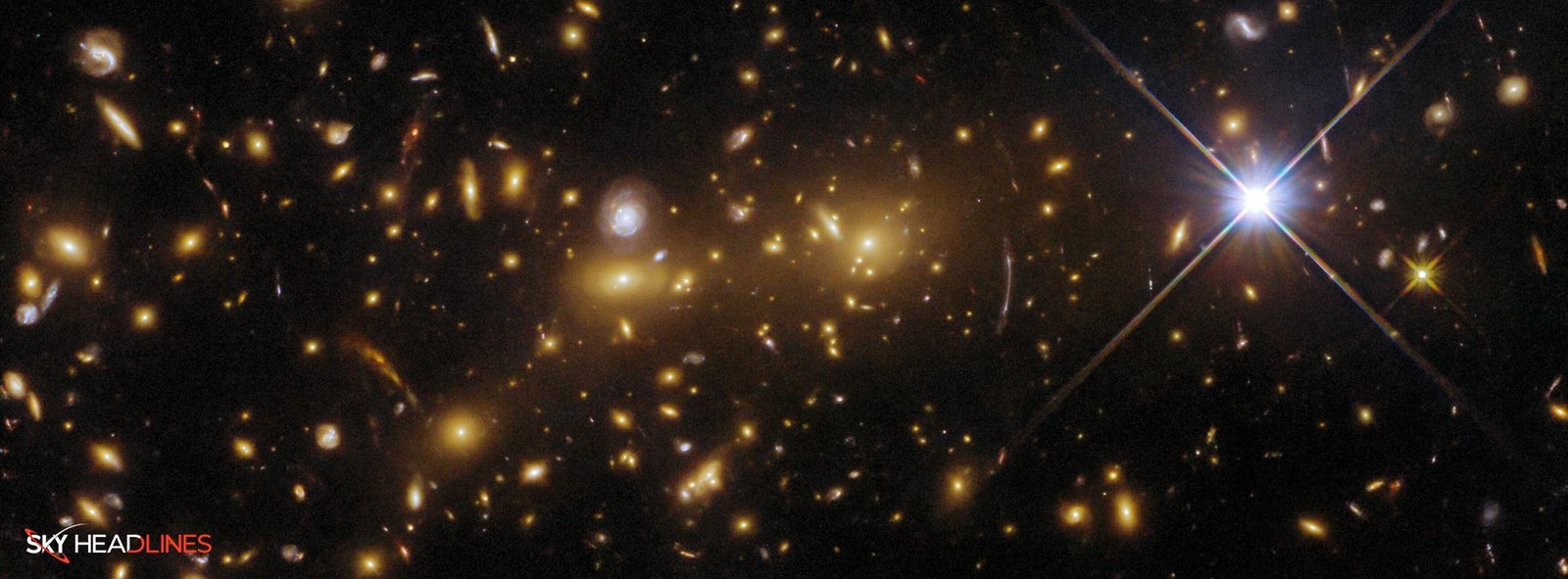NASA has recently captured a monster galaxy, but it is not the monster that you are imagining. It is a galaxy cluster roughly eight billion light-years from Earth.
ESA Hubble Captures Monster Galaxy that is Merging to Form a Massive Gravitational Lens
In this view of the extraordinary galaxy cluster eMACS J1353.7+4329, which resides roughly eight billion light-years from Earth in the constellation Canes Venatici, the NASA/ESA Hubble Space Telescope has captured a monster in the making. This collection of at least two galaxy clusters is merging to become a cosmic monster, a single massive cluster serving as a gravitational lens.
Now, we will see how Einstein’s General Theory of Relativity works here and how it relates to the monster galaxy.
Visualization of Einstein’s General Theory of Relativity
A striking illustration of Einstein’s general theory of relativity in action is gravitational lensing. A celestial entity, such as a monster galaxy is large enough to warp spacetime, causing the path of light around the object to be twisted visually, as if by a large lens.
Astronomers can observe things that would typically be too weak and too distant to be detected, thanks to gravitational lensing. This phenomenon can also magnify objects in the far reaches of the universe, allowing for the study of phenomena like the Monster Galaxy.
It can also distort photographs of background galaxies, turning them into light streaks. The initial signs of gravitational lensing may be seen in this image as brilliant arcs that blend in with the swarm of galaxies in eMACS J1353.7+4329.
Apart from this, here arises the question, will this visualization further help in scientific studies? The following part of the blog is solely related to it!
Monster Galaxy: Paving the Path for James Webb Space Telescope Studies
The data in this image come from the Monster Galaxy observation effort, which utilized two of Hubble’s sensors to observe five unique galaxy clusters at various wavelengths. Hubble’s Wide Field Camera 3 and Advanced Camera for Surveys facilitated these multi-wavelength studies
The researchers hope their findings will open the way for future studies of monster galaxies of huge gravitational lenses using next-generation telescopes like NASA’s/ESA’s/CSA’s James Webb Space Telescope.
You have surely heard about the galaxies clusters. But how is it different from the monster galaxy? Let’s see it!
A COSMIC MONSTER! What is this all about? Let’s Find Out!
Hubble’s latest image reveals a dense congregation of oval-shaped galaxies forming a galaxy cluster, each exhibiting a radiant orange halo around a luminous core. But it is not the monster galaxy.
Scattered across the image are numerous other galaxies, accompanied by a brilliant star showing a starburst effect characterized by distinct diffraction spikes.
Guys, now you will surely think about the relationship of its finding to the early galaxies. That is why to clear your thoughts, we have curated a part. So, keep reading!
A Cosmic Cluster: Let’s Dig Deep Into It!
This colossal cosmic cluster serves as a gravitational lens, enabling scientists to delve into the intricate details of early galaxies beyond their typical reach. Gravitational lensing occurs when massive foreground objects, like the merging galaxies observed here, warp the fabric of spacetime, leading to the magnification or distortion of light from more distant objects.
ESA officials explained:
“The significant mass of a celestial body such as a galaxy cluster distorts the very fabric of spacetime, visibly bending the path of light as if through a vast lens,”
“The initial indications of gravitational lensing are already evident in this image as luminous arcs, intermingling with the multitude of galaxies in eMACS J1353.7+4329.”





